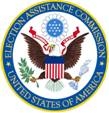
New Guidelines Issued for Voting Systems December 22, 2005

 On December 13, 2005, the Election Assistance Commission (EAC) approved new guidelines that states can follow on a voluntary basis to ensure that voting systems function accurately and reliably. The Voluntary Voting System Guidelines cover usability, including accessibility for people with disabilities, security, and privacy. Access is addressed for all types of users, including those with vision impairments. The guidelines were developed under the Help America Vote Act of 2002 which Congress enacted in response to the ballot controversies that arose in the presidential election of 2000.
On December 13, 2005, the Election Assistance Commission (EAC) approved new guidelines that states can follow on a voluntary basis to ensure that voting systems function accurately and reliably. The Voluntary Voting System Guidelines cover usability, including accessibility for people with disabilities, security, and privacy. Access is addressed for all types of users, including those with vision impairments. The guidelines were developed under the Help America Vote Act of 2002 which Congress enacted in response to the ballot controversies that arose in the presidential election of 2000.
"These guidelines were created to ensure that voting systems will be accurate, reliable, secure and accessible to all voters," said Commission Chair Gracia Hillman. "EAC will also certify all voting systems to make certain that they meet these goals.” The guidelines, which are responsive to advances in voter system technologies, provide performance criteria for functionality, accessibility and security that systems can be tested against. They also establish evaluation criteria for the certification of voting systems.
An advisory body established under the law drafted the guidelines for the Commission’s review and approval. The Technical Guidelines Development Committee included representation from various entities with technical and scientific expertise on voting systems and relevant aspects, such as accessibility. The Access Board was represented on this 14-member panel by Board members J.R. Harding, Ed.D. and James Elekes, M.Ed, MPA/CPM.
“By making accessibility an integral part of voting systems,” noted Elekes, “the new guidelines and other reforms of the Help America Vote Act will ensure that voters with disabilities can cast their vote with dignity and in privacy.” Through their seats on the guidelines committee, as well as the Commission’s Board of Advisors, Elekes and Harding provided input on the scope of the guidelines and the testing of voting system access. “The Board was eager to help shape these guidelines as they will play a critical role in making the voting booth accessible to all Americans,” said Harding.
The Commission released the guidelines for public comment last June. During the 90-day comment period, the Commission held public meetings in New York, Denver, and Pasadena. Over 5,600 comments were received. In addition to its work on the guidelines, the Commission serves as a national resource for information on the administration of Federal elections, conducts studies on voting system improvements, and administers various grant programs funded by the law.
The new guidelines are posted on the Commission’s website. Related information and materials are available on the Commission's website at www.eac.gov.